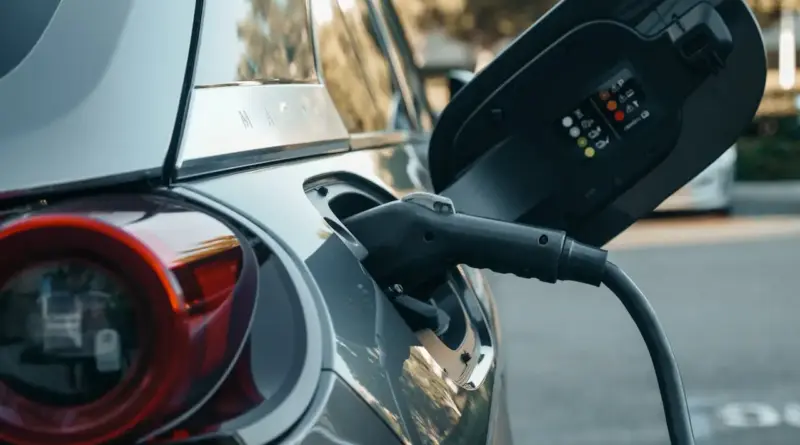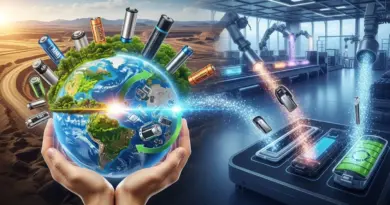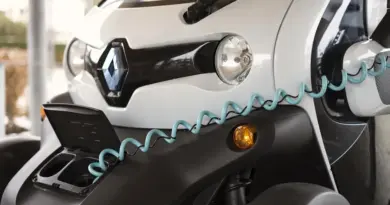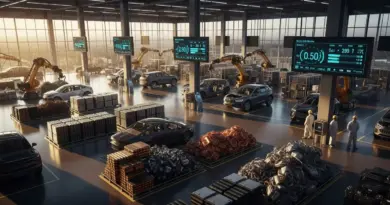The Technology Behind Recycling Electric Car Batteries
Last Updated on September 25, 2025 by Team Eletric Car
Recycling electric car batteries recovers up to 95% of critical materials like lithium, cobalt, and nickel, reducing mining needs and cutting CO2 emissions by 70% compared to virgin extraction. This innovative process powers a sustainable future for EVs, addressing the growing waste from millions of end-of-life batteries annually.
Moreover, advanced battery recycling technologies such as hydrometallurgy and direct recycling not only reclaim these valuable metals but also minimize environmental hazards, like toxic leaks from improper disposal, ensuring a circular economy that supports the global shift to electric vehicles without depleting rare earth resources.
See also: Battery Recycling: What Happens to EV Batteries After 10 Years?
Understanding Electric Car Batteries and the Need for Recycling
Electric car batteries, primarily lithium-ion types, are the powerhouse behind modern EVs, storing energy through chemical reactions involving lithium, cobalt, nickel, and graphite. As the world accelerates toward electrification, with over 20 million EVs on roads in 2025, the demand for efficient recycling electric car batteries has skyrocketed. Without proper recycling, these batteries pose risks like soil contamination from heavy metals and fire hazards in landfills.
The core challenge lies in the complex composition of EV batteries, which include multiple cells packed in modules. Traditional disposal methods waste precious resources, but battery recycling technology steps in to extract and reuse materials, promoting sustainability. For everyday users, this means your old Tesla or Nissan Leaf battery doesn’t end up as trash but gets reborn into new ones, lowering costs for future EVs.
Key components of electric vehicle batteries include the anode (graphite), cathode (lithium compounds), electrolyte, and separators. Recycling targets these to recover high-value elements, reducing reliance on mining in regions like the Democratic Republic of Congo for cobalt.
The Evolution of Battery Recycling Technologies
Over the past decade, recycling technologies for electric car batteries have advanced from basic smelting to sophisticated processes. Early methods focused on pyrometallurgy, but 2025 sees a blend of innovative approaches tailored for efficiency and eco-friendliness.
Pyrometallurgy: The Traditional High-Heat Approach
Pyrometallurgy involves heating batteries to extreme temperatures (over 1,000°C) to melt and separate metals. This method recovers cobalt and nickel effectively but consumes high energy and produces emissions. It’s like baking a cake to extract ingredients—effective but wasteful.
Pros include scalability for large volumes, but cons are high carbon footprints. In 2025, companies like Umicore refine this with cleaner furnaces, making it suitable for older battery types.
Hydrometallurgy: The Chemical Extraction Method
Hydrometallurgy uses aqueous solutions to leach metals from crushed batteries, offering higher recovery rates (up to 98%) for lithium and cobalt. It’s gentler on the environment, akin to dissolving sugar in water to separate it.
This process involves shredding, leaching with acids, and purifying extracts. It’s dominant in 2025 due to lower energy use, with firms like Redwood Materials leading innovations. For leigos, it’s a “wet” recycling that minimizes waste gases.
Direct Recycling: The Future of Battery Reuse
Direct recycling, or cathode-to-cathode recycling, disassembles batteries to reuse materials without full breakdown. It preserves the chemical structure, reducing costs by 50% compared to traditional methods.
Pioneered by companies like Li-Cycle, this technique is gaining traction in 2025 for its efficiency in handling next-gen solid-state batteries. Imagine reusing Lego blocks without melting them— that’s direct recycling in simple terms.
Key Materials Recovered in Electric Car Battery Recycling
Recycling focuses on extracting critical minerals to combat shortages. Here’s a list of primary materials and their importance:
- Lithium: Essential for battery cathodes; recycling meets 20% of global demand by 2025.
- Cobalt: Boosts energy density; ethical sourcing from recycling reduces child labor in mining.
- Nickel: Improves battery life; high-purity recovery cuts import reliance.
- Graphite: Anode material; synthetic variants from recycling lower costs.
- Manganese: Stabilizes cathodes; abundant but vital for NMC batteries.
These recoveries support a circular economy, where recycled materials feed back into new EV battery production.
Challenges in Recycling Electric Car Batteries
Despite advancements, recycling electric car batteries faces hurdles like varying battery chemistries (LFP vs. NMC) and collection logistics. In 2025, only 5% of global batteries are recycled, per the International Energy Agency, due to fragmented supply chains.
Safety issues, such as thermal runaway during dismantling, require specialized facilities. Economic barriers include high initial costs for recycling plants, though government incentives (e.g., U.S. Inflation Reduction Act) are boosting investments.
Environmental challenges involve managing wastewater from hydrometallurgy, but innovations like closed-loop systems minimize pollution. For consumers, the key is proper end-of-life disposal through certified centers.
Environmental and Economic Benefits of Battery Recycling
Battery recycling technology yields massive benefits. Environmentally, it cuts greenhouse gases by 1.2 tons per battery recycled, equivalent to removing a car from the road for a year.
Economically, it creates jobs in green tech sectors and reduces raw material costs by 40%, stabilizing EV prices. In 2025, the global battery recycling market is valued at $20 billion, driven by EU mandates for 95% recovery rates by 2030.
A comparative list of benefits:
- Reduces mining impacts on biodiversity.
- Lowers energy consumption by 50% vs. virgin extraction.
- Prevents toxic leaks in landfills.
- Boosts supply chain resilience amid geopolitical tensions over minerals.
Innovations Shaping Battery Recycling in 2025
2025 brings cutting-edge tech like AI-optimized sorting robots from AMP Robotics, which separate battery types with 99% accuracy, speeding up processes.
Biotech approaches, using bacteria to leach metals (biohydrometallurgy), emerge as eco-friendly alternatives, reducing chemical use by 70%. Companies like Ascend Elements pioneer upcycling, upgrading recycled materials for higher-performance batteries.
Solid-state battery recycling gains focus, with methods like cryogenic freezing to safely dismantle dense packs. These innovations make recycling electric car batteries more efficient and scalable.
Global Regulations and Industry Standards
Regulations drive progress. The EU’s Battery Regulation mandates 16% recycled content in new batteries by 2031, pushing sustainable battery recycling.
In the US, the Bipartisan Infrastructure Law funds $3 billion for recycling facilities. China’s dominance in processing (80% market share) spurs international standards via the Global Battery Alliance.
For consumers, look for certifications like R2 or e-Stewards to ensure ethical recycling.
Future Outlook for Electric Car Battery Recycling
By 2030, 12 million tons of batteries will need recycling annually, per BloombergNEF. Technologies like direct recycling could achieve 99% efficiency, closing the loop on EV sustainability.
Challenges remain, but with investments from Tesla and VW in proprietary recycling, the industry is poised for growth. For everyday drivers, this means cheaper, greener EVs ahead.
FAQs about the Technology Behind Recycling Electric Car Batteries
What is the main technology used in recycling electric car batteries?
Hydrometallurgy is the leading method, using chemical solutions to extract metals like lithium and cobalt with up to 98% efficiency, making it eco-friendly for 2025 standards.
How does direct recycling differ from traditional methods?
Direct recycling reuses battery materials without full breakdown, preserving structure and cutting costs by 50%, unlike pyrometallurgy’s high-heat melting.
Why is recycling electric car batteries important?
It recovers 95% of critical minerals, reduces CO2 emissions by 70%, and prevents environmental hazards from landfill disposal, supporting a sustainable EV future.
What materials are recovered from electric car batteries?
Key recoveries include lithium, cobalt, nickel, graphite, and manganese, which are reused in new batteries to minimize mining dependencies.
Are there challenges in battery recycling technology?
Yes, varying battery chemistries and safety risks during dismantling pose hurdles, but innovations like AI sorting address them in 2025.
How does battery recycling benefit the environment?
It lowers mining impacts, cuts energy use by 50%, and prevents toxic leaks, reducing overall CO2 emissions equivalent to removing cars from roads.
What is the future of electric car battery recycling?
By 2030, efficiency could reach 99% with biotech and AI, driven by regulations mandating recycled content in new batteries.
Is electric car battery recycling cost-effective?
Yes, it reduces raw material costs by 40% and creates jobs, with the market valued at $20 billion in 2025.
How do regulations affect battery recycling?
EU mandates 95% recovery by 2030, while US funds boost facilities, ensuring ethical and efficient processes worldwide.
Can individuals recycle their electric car batteries?
Yes, through certified centers or manufacturer programs like Tesla’s, ensuring safe and responsible disposal.




